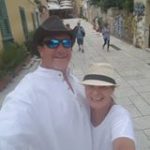Lake Titicaca is the largest freshwater lake in South America and the highest of the world’s large lakes. Titicaca is one of less than twenty ancient lakes on earth, and is thought to be there million years old. Lake Titicaca sits 3 810 m above sea level and is situated between Peru to the west and Bolivia to the east. Peruvian part is located in Puno department, in Puno and Huancane provinces.
It covers 3 200 square miles (8 300 square km) and extends in a northwest-to-southeast direction for a distance of 120 miles (190 km). It is 50 miles (80 km) across at its widest point. A narrow strait, Tiquina, separates the lake into two bodies of water. The smaller, in the southeast, is called Lake Huinaymarca in Bolivia and lake Pequeño in Peru.
Lake Titicaca lies between Andean ranges in a vast basin (about 22 400 square miles – 58 000 square km in area) that comprises most of the Altiplano (High Plateau) of the northern Andes. In the snow-covered Cordillera Real on the north-eastern (Bolivian) shore of the lake, some of the highest peaks in the Andes rise to heights of more than 21 000 feet (6 400m).
Titicaca’s level fluctuates seasonally and over a cycle of years. During the rainy season (summer, from December to March) the level of the lake rises, normally to recede during the dry winter months. The average level is 3.810msnm +- 2.5m.
Titicaca’s waters are limpid and only slightly brackish, with salinity ranging from 5.2 to 5.5 parts per 1 000. Surface temperatures average 56°F (14°C); from a thermo cline at 66 feet (20 m) temperatures drop to 52°F(11°C) at the bottom. Analyses show measurable quantities of sodium chloride, sodium sulphate, calcium sulphate, and magnesium sulphate in the water.
The lake averages between 460 and 600 feet (140 and 180 m) in depth, but the bottom tilts sharply toward the Bolivian shore, reaching its greatest recorded depth of 920 feet (280 m) off Isla Soto in the lake’s northeast corner.
More that 25 rivers empty their waters into Titicaca; the largest, the Ramis, draining about two-fifths of the entire Titicaca Basin, enters the north-western corner of the lake. One small river, the Desaguadero, drains the lake at its southern end. This single outlet empties only 5 percent of the lake’s excess water; the rest is lost by evaporation under the fierce sun and strong winds of the dry Altiplano.
There is evidence off the continuous presence of human population in the lake’s area: the monumental remains and both tangible an intangible elements talk about different settings, the land-use and its management through specific and outstanding cultural manifestations. This evidence shows the constant relation between man and nature since ancient days and during a long period of time that goes from the birth and development of Andean pre-Hispanic societies until our days.
This long process that began approximately around 10 000 b.c. to 8 000 b.c. and lasted until the first third of the sixteen century with the arrival of the Incas was characterized by different and successive Andean societies and ethnic groups. The other period comprises from Colonial times in the sixteenth century up to our days. All this process has defined a cultural area where tradition has been preserved showing the permanence of ways of life, of customs and ancestral values.
Archeological architectonic building of great singularity in some sites as Pukara, Sillustani, Cutimbo (Peruvian side) and Tiwanaku and the Isla del Sol (Bolivian side) are clear evidence of the existence of societies such as Pukara, Tiwanaku, Colla Lupaka and Inca.
The agricultural techniques of pre-Hispanic origin such as the so called waru-waruor or ridges of furrows, the amazing terraces that are to be found in different islands of the lake and the totora reed «floating islands» in the middle of the lake are expressions of remarkable value and evidence of land-use and environmental management.
Languages, customs, beliefs and artistic works that remain until our days are evidence of ways of life and of cultural values of exceptional value that characterized the Uru inhabitants of the lake and the Taquilenos from Taquile Island, who are organized in a very strong community and whose textile art is one of the fundamental expressions that has been influenced by the textile art of the ancient Paracas, Nazca, Wari and above all, the Collas, a group of people from the pre-Hispanic Peruvian Andean highland.
Languages, traditions, beliefs and customs are intermingled in different forms of social organization, cycles of social life, feasts and rituals, music and dances and in the preservation of sacred places, being the lake the most sacred one, since from its waters emerged the founders of the Inca civilization and the Empire.









